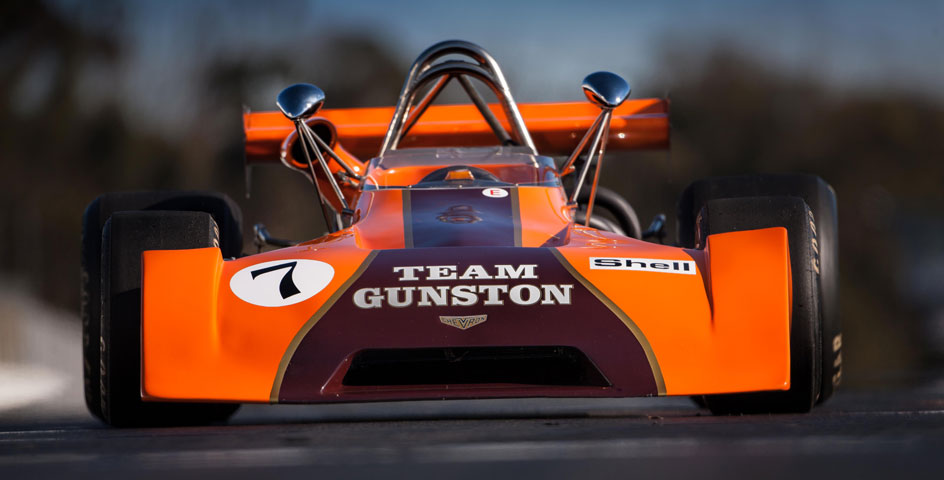1972 Chevron B25/3

The descriptions of the Classic Cars in the Directory were partly generated or supplemented with the help of artificial intelligence (AI). The content may occasionally not always be entirely accurate or factually correct despite careful checking.
The Chevron B25/3 of 1972 is a masterpiece of engineering that embodies the best of racing technology and design from the era. This race car is made of a tubular monocoque chassis that makes it extremely strong and lightweight, allowing it to reach impressive speeds in a race track. It features a mid-mounted Cosworth BDA engine that is capable of producing up to 240 horsepower, thanks to a Weber 45 DCOE induction system, a dry sump lubrication system, and a custom exhaust system.
The engine is coupled with a Hewland FGA 5-speed sequential gearbox that ensures a smooth and precise shifting, while also delivering the power to the rear wheels through a ZF limited-slip differential. The car's suspension system consists of double wishbones at the front and rear, with adjustable shock absorbers and anti-roll bars that provide superior handling and control in tight corners and high-speed corners.
The Chevron B25/3 of 1972 also features a high-performance braking system, comprising of ventilated discs with four-piston calipers at the front and solid discs with twin-piston calipers at the rear. The car's aerodynamics are optimized to reduce drag and provide downforce, courtesy of the sleek body design and the adjustable front and rear wings.
This racing car is also equipped with a comprehensive instrumentation package, including a rev counter, oil pressure gauge, water temperature gauge, and fuel pressure gauge. A quick-release steering wheel, a lightweight racing seat, and a 6-point harness ensure the driver's safety and comfort during high-stress driving situations.
Overall, the Chevron B25/3 of 1972 is a technological marvel that blends performance, aesthetics, and reliability in a single package, making it a much sought-after classic racing car that still dominates vintage racing circuits today.
Milestones
- Chevron B25/3 designed by Derek Bennett and built by Chevron Cars Ltd in 1972 - Powered by a 2.0-liter Ford BDG engine producing around 250 horsepower - Debuted at the Brands Hatch 1000 km race on April 30th, 1972, driven by John Bridges and Derek Bennett - Competed in various races and championships, including the European 2-Litre Series and the 24 Hours of Le Mans - Won the first race of the European 2-Litre Series at Zandvoort in May 1972 with John Bridges and Tim Schenken driving - Finished third overall in the Championship with two wins and four podium finishes - Participated in the 24 Hours of Le Mans and completed 210 laps before retiring due to engine failure - Continued to race in 1973, with the highlight being a win at the 6 Hours of Imola with John Hine and Tim Schenken driving - Sold to private owners and competed in historic racing events in later years - Considered one of Chevron's most successful sports prototype cars and a classic example of British racing engineering.Technical
- Chassis: Aluminium-skinned monocoque with tubular steel subframe - Suspension: Double wishbone with coil spring and adjustable dampers in the front; rear independent suspension with radius arms. - Engine: 2.0-liter Ford BDG inline-four engine producing 250hp at 8500rpm - Transmission: Hewland FT200 5-speed manual gearbox - Brakes: Disc brakes on all four wheels with alloy calipers - Fuel tank capacity: 35 gallons - Weight: 1056 pounds (480 kg) - Top Speed: 174 mph (280 km/h) - Racing history: Competed in a variety of championships including F2, F5000, and Sports Car races, winning numerous races and championships in the 1970s.